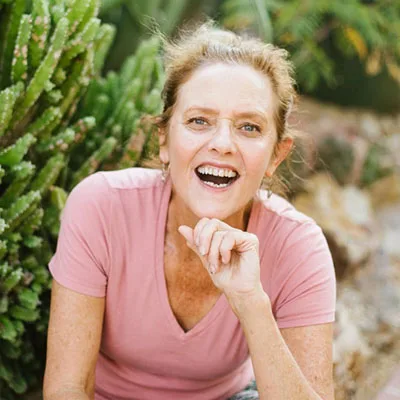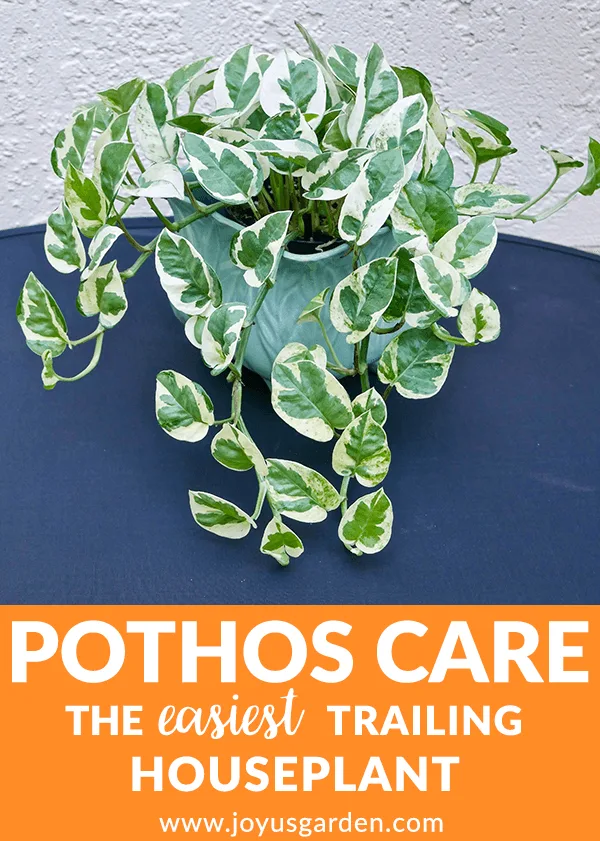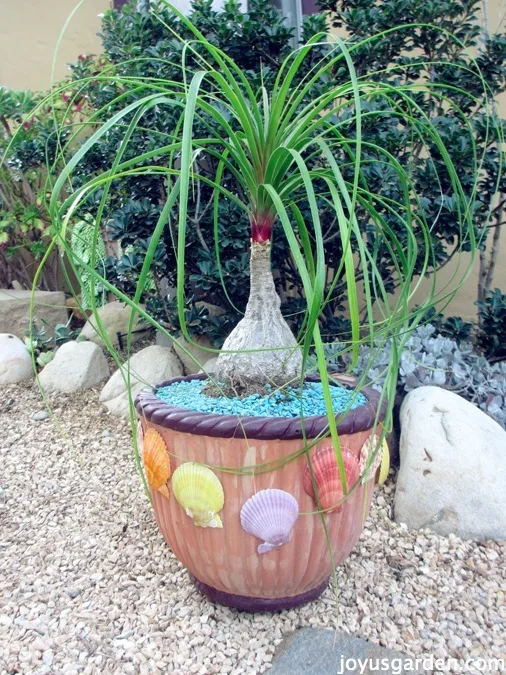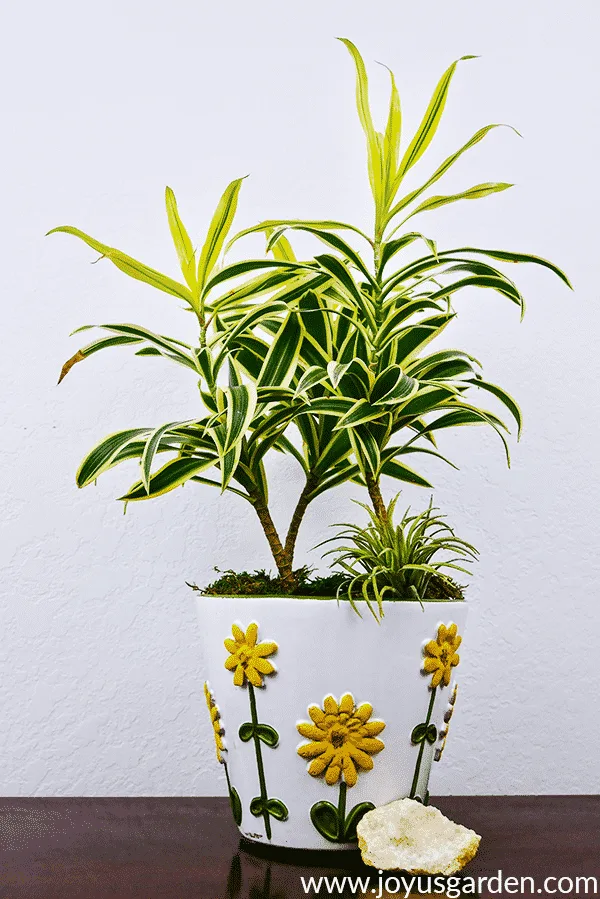Red Aglaonema Care: How to Grow Aglaonema Siam Aurora
Aglaonema Siam Aurora, aka Red Agalonema, is a beautiful, easy-care houseplant. Find care tips here to keep this jazzy beautiful plant healthy and strong.
Agalonemas, commonly called Chinese Evergreens, are old standbys in the world of indoor plants. Gone are the days when you could only find three or four types of Aglaonema plants, mainly with darker or duller foliage. New colorful hybrids have arrived on the scene and this is one of them.
Aglaonema Siam Aurora has red patterned foliage and today I’m sharing all about how to care for this vibrant houseplant.
Aglaonema Siam Aurora Traits
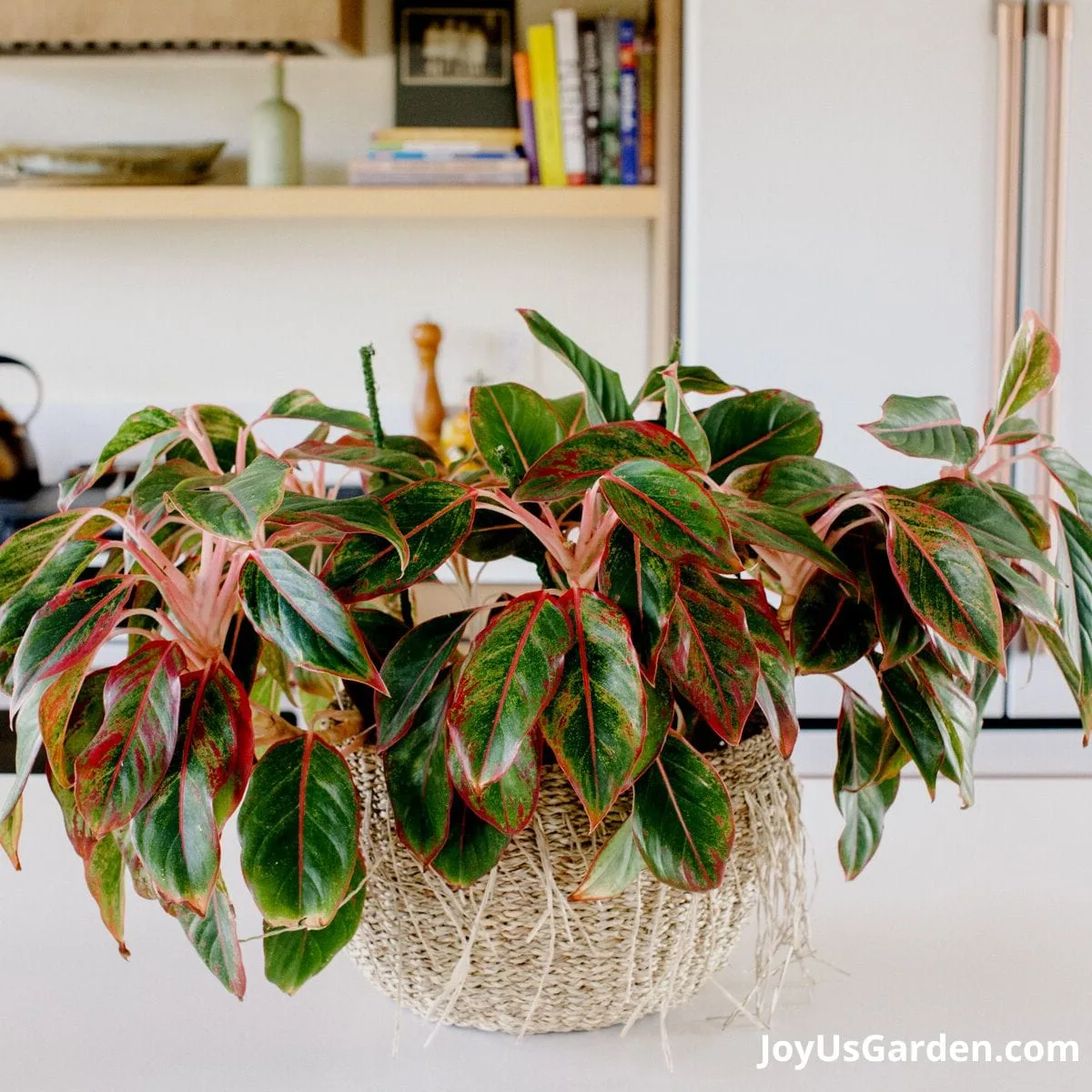
Common Names: There is more than one common name for this plant. Here are the ones I’ve seen: Red Chinese Evergreen, Red Siam Chinese Evergreen, Siam Aglaonema, Siam Aurora, Aglaonema Firecracker, Siam Aurora Red Aglaonema, and Siam (which is what mine was labeled when I bought it).
There are also other hybrids with red in the foliage like Red Valentine, Red Emerald, Super Red, etc. You have much to choose from Aglaonema-wise if you’re a fan of red!
These hybrids with a lot of foliage color (mainly red, pink, and white) differ in one way from their Chinese Evergreen predecessors which I’ll get into down below.
Regardless of which Red Aglaonema variety you have, this care post applies to all of them.
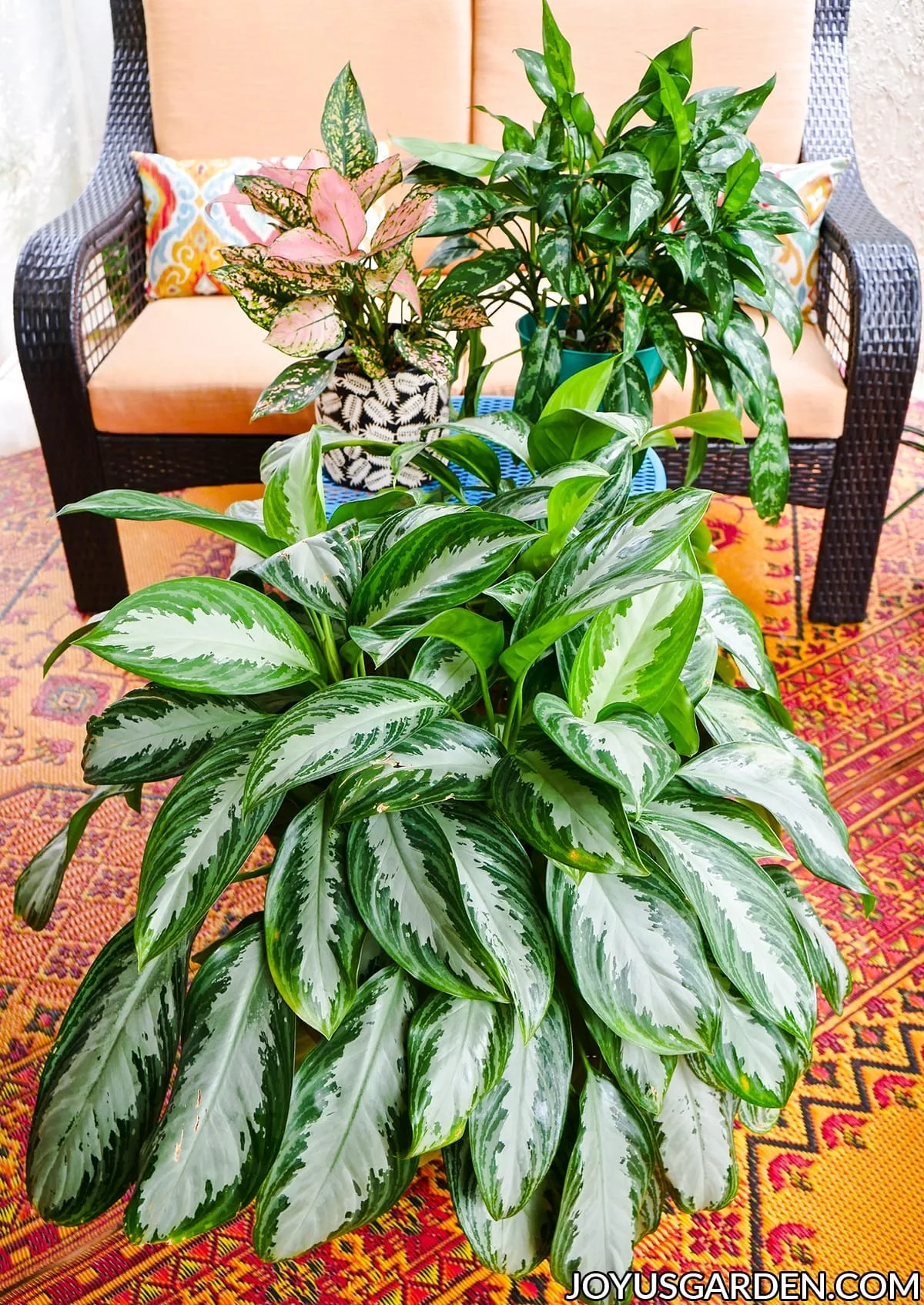
Aglaonema Siam Aurora Size
Red Aglaonemas are most commonly sold in 6″ pots. Also, in 8″ and 10″pots.
Mine is five years old. I repotted it last fall into an 8″ pot. I also pruned it and it now stands 18″ tall x 24″ wide.
Ultimately they grow to 3′ x 3′.
Growth Rate
They are moderate growers. In lower light conditions, they’ll grow slower.
Uses
I’ve seen them most commonly sold as tabletop plants. You can use it as a low-floor plant as yours grows and become taller and wider.
The Big Draw
The eye-catching foliage. We love the red leaves!
I’ve already done a post on general Agalonema Care. I wanted to do one specifically on this plant because it’s become quite popular and you are obviously searching for it.
Red Aglaonema Video Guide
Red Aglaonema Care
Red Aglaonema Light Requirements
This is where it differs from some of the other Aglaonmeas known for their tolerance of lower light conditions. I’ve found that the varieties with dark green leaves, like my Ag. Emerald Beauty, handle lower light much better.
The Red Aglaonema and others that have more color and brightness in their foliage (like my Pink Aglaonema pictured above) need high to medium light to do their best. A location with bright indirect sunlight is best.
It can tolerate high light but keep them away from windows with the intense sun coming in or they’ll burn in no time flat. Conversely, it’ll tolerate lower light but lose most coloration over time and grow slower.
Mine sits on a table in my kitchen which has four windows and a sliding glass door. I live in the Arizona desert where the sun is intense so this seems to be its sweet spot. 5′-10′ away from a south or west window would work.
Mine was much less vibrant when I bought it. The plant was more pinkish and now the red has really come out.
I rotate this plant every 1-2 months so it gets light on all sides and grows evenly.
You may have to move yours to a brighter spot in the winter months so it gets the light it needs. Here’s a post on Winter Houseplant Care that will help you out.
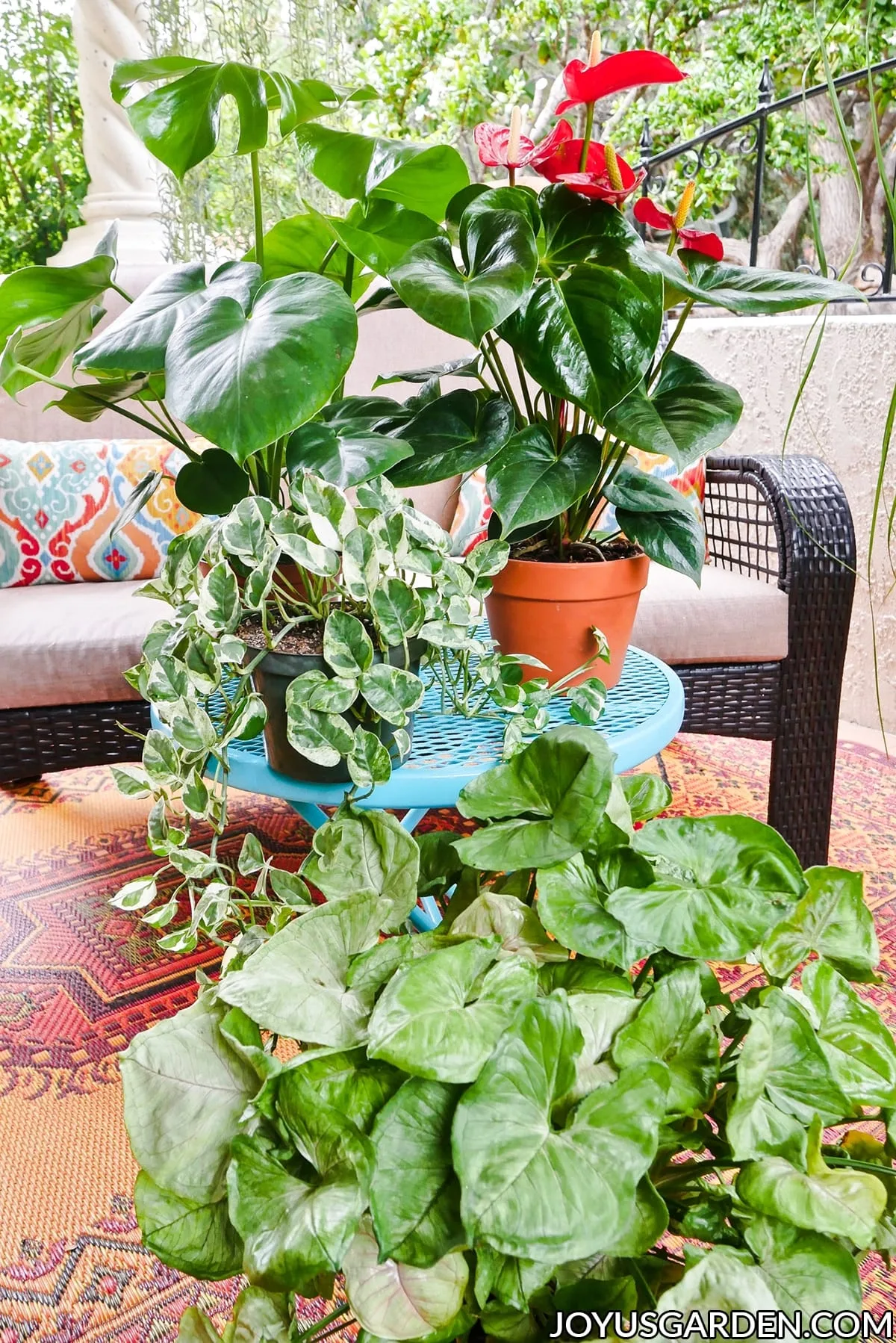
Red Aglaonema Watering
I water mine when it’s almost dry. That tends to be every 7-9 days in the warmer months and every 10-15 days in the cooler, darker months.
It’s hard for me to tell you often to water your Aglaonema Siam Aurora because there are many variables that come into play. Here are a few: the pot size, the type of soil it’s planted in, the location where it’s growing, and your home’s environment.
Make sure the pot it’s planted in has at least one drainage hole so the excess water can freely flow out. this prevents water from building up in the bottom which can lead to root rot.
In the colder months, water less often. Here’s a post on Winter Houseplant Care that will help you out.
This guide to Watering Indoor Plants will shed more light on the subject of houseplant watering.
Temperature
If your home is comfortable for you, it’ll be so for your houseplants too. Just be sure to keep your Red Aglaonema away from any cold drafts as well as air conditioning or heating vents.
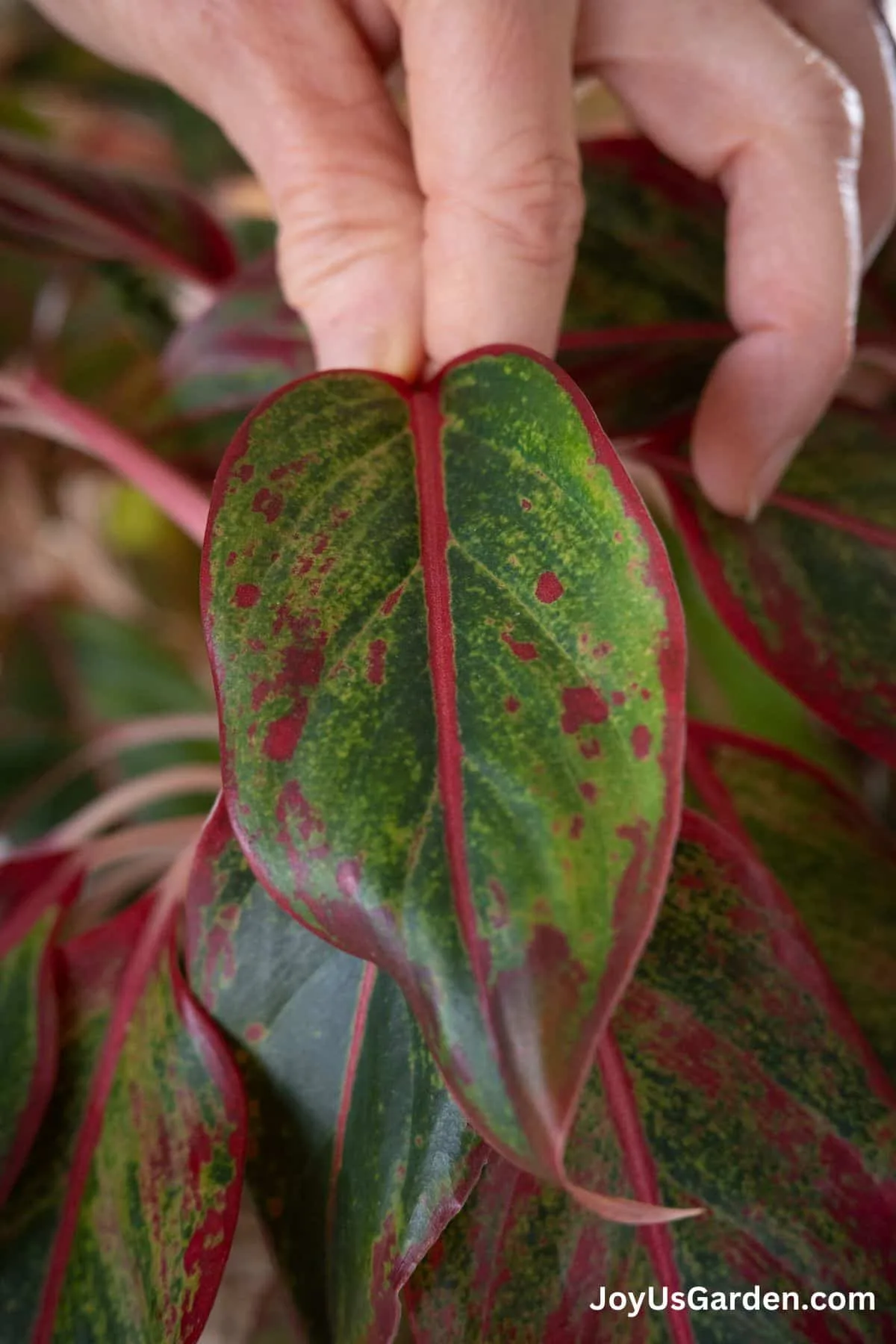
Humidity
Aglaonemas, in general, are native to the subtropical and tropical regions of Asia. Despite the fact that tropical plants prefer high humidity, they’re fairly adaptable and do just fine in our homes which tend to have dry air.
Here in Tucson, mine only has a few teeny, tiny brown tips which are in reaction to the dry desert air.
I have a large, deep kitchen sink with a faucet water filter. Every few times I water my Red Aglaonema, I take it to the sink, spray the foliage and leave it in there for an hour or 2 to temporarily up the ante on the humidity factor.
I have a humidity meter in my dining room. I run my humidifiers when the humidity reads low, which is often here in the Arizona desert!
If you think yours look stressed due to lack of humidity, here are a few other things you can do. Fill the saucer your plant sits on with pebbles and water. Put it on the pebbles but make sure the drain holes and/or the bottom of the pot aren’t submerged in water.
Misting your plant a few times a week will help too.
Fertilizer / Feeding
We have a long growing season here in Tucson which is from mid-February through October. I will fertilize with Grow Big, Liquid Kelp, and Maxsea or Sea Grow five to seven times during the growing season. I alternate these liquid fertilizers and don’t use them all together.
When my plants are putting new growth and new leaves, it’s my sign to start feeding. For you in a different climate zone with a shorter season, you’ll start later. Feeding two or three times per year with a houseplant fertilizer may be enough for your plants.
Fertilizing too often or with too great a ratio of fertilizer can cause salts can build up and eventually burn the roots of the plant. This will show up as brown spots on the leaves. If you fertilize more than three times a year, you can try using the fertilizer at half-strength. The label on the jar or bottle will guide you.
It’s best to avoid fertilizing a houseplant that is stressed, ie. bone dry or soaking wet.
Every other spring, I give the majority of my houseplants a light application of worm compost with a light layer of compost over that. Easy does it – a 1/4 ” layer of each is enough for a 6″ size houseplant. It’s strong and breaks down slowly. Read about my Worm Compost/Compost Houseplant Feeding right here.
Be sure to check out our Guide To Fertilizing Indoor Plants for lots more info.
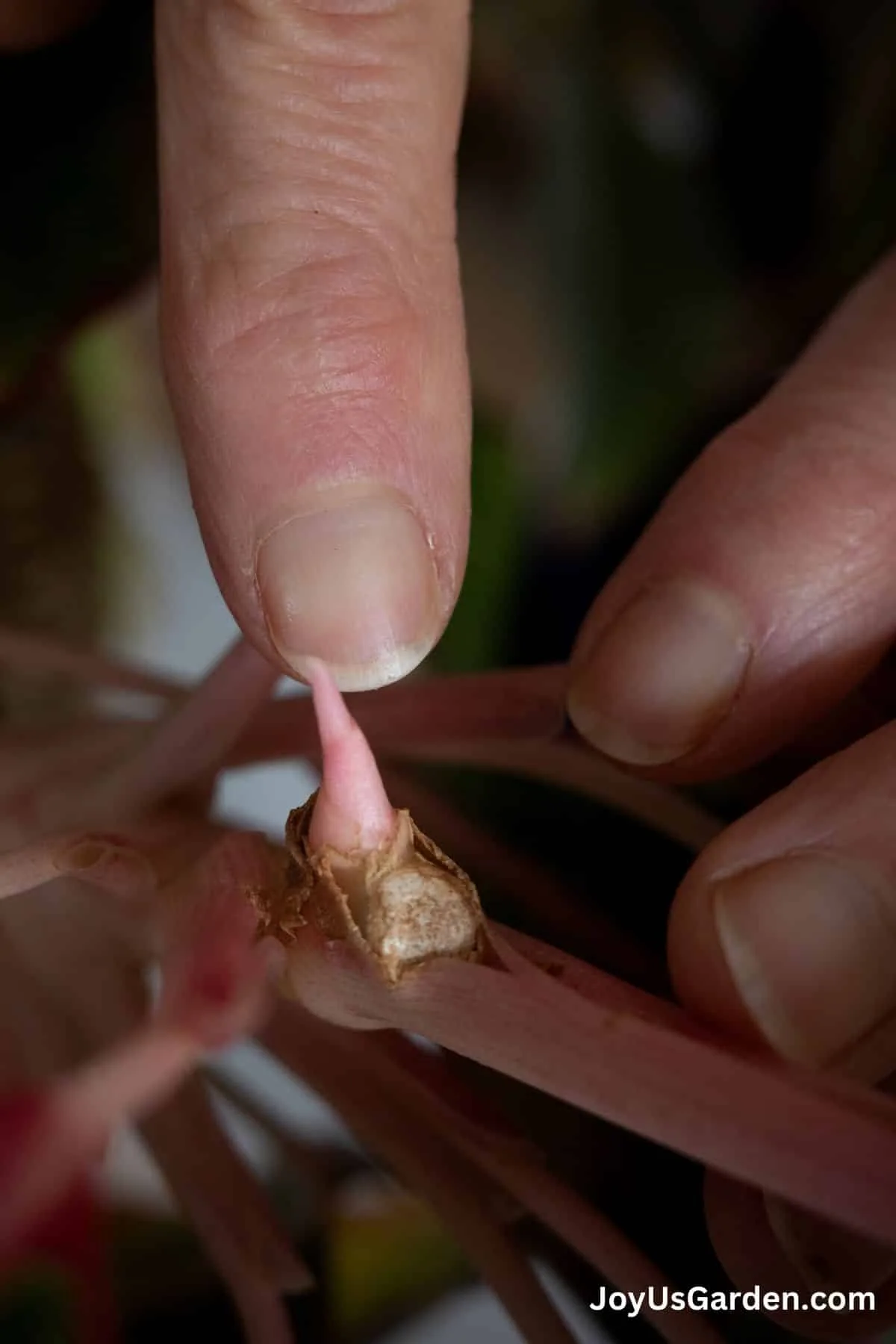
Best Soil For Aglaonema
I repotted my Red Aglaonema last fall.
You want to use potting soil that is peat-based and formulated for indoor plants. I alternate between Happy Frog and Ocean Forest. Sometimes I mix them together. They have lots of good stuff in them.
This, like other houseplants, doesn’t like a heavy mix. I up the ante on the aeration and drainage factors, which lessens the chance of root rot, by adding some pumice (this is my choice) or perlite. 3 parts potting soil to 1 part pumice or perlite should be fine. Add a bit more to the mix if it still needs lightening up.
I also mix in a couple of handfuls of worm compost and compost to add richness and nourishment.
Repotting
Repotting is best done in spring or summer; early fall is fine if you’re in a warm climate like me. The faster your plant is growing, the sooner it’ll need repotting. Every 2-4 years will be sufficient.
My plant is now five years old. It was in a 6″ grow pot and roots were coming out of every drain hole. I repotted it last fall into an 8″ grow pot.
I’ve also done a Repotting Basics Guide which you’ll find helpful, especially if you’re new to the world of houseplant gardening.
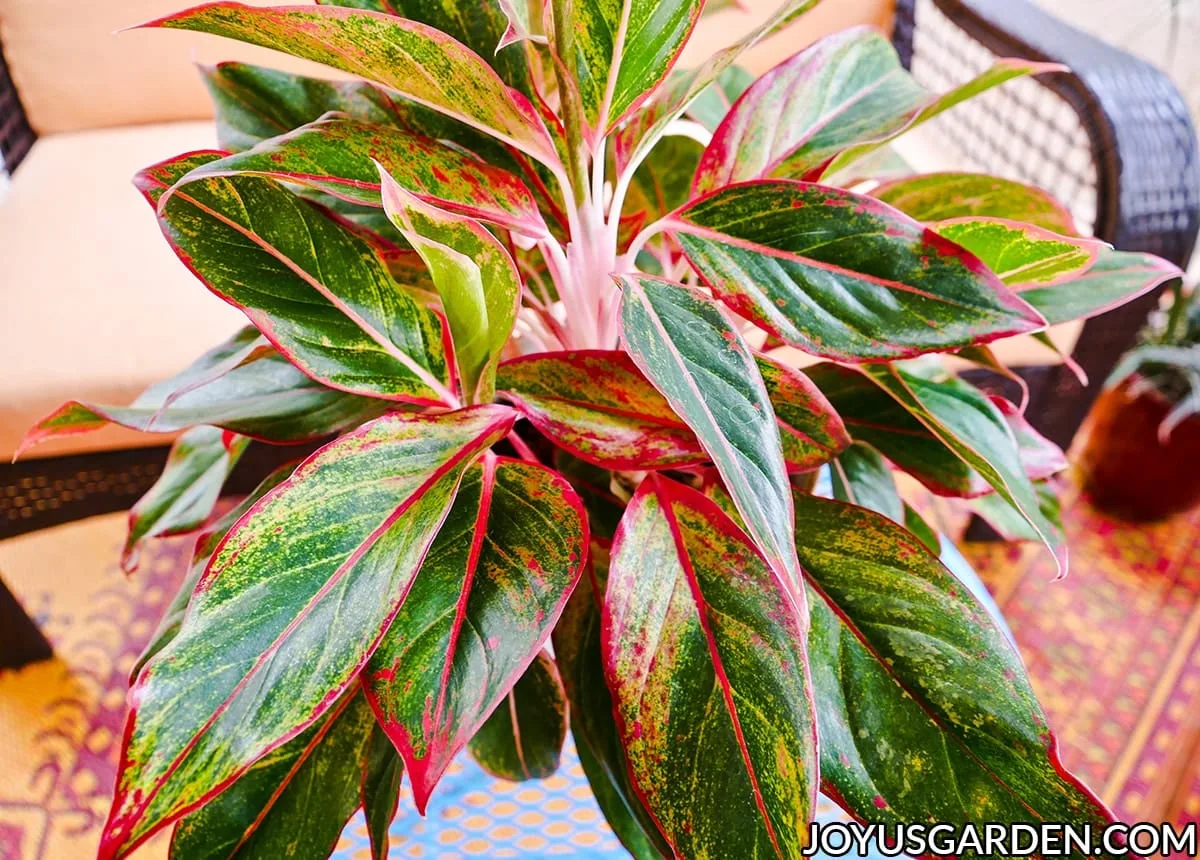
Pruning/Trimming
Not much is needed on a regular basis. The main reasons to prune this plant are to take off the occasional yellow leaf or spent flower.
If the plant is getting too leggy or you want it to grow denser, then tip-prune or pinch off the new growth.
My plant was getting very floppy so I pruned it a couple of weeks after I repotted it last fall. I took off at least 5″ of growth on some stems and tip-pruned the other stems.
It went through that awkward “after-pruning” phase but is looking much better five months later. The second photo in this post shows how it’s doing and a few photos down from that you can see the new growth emerging from the stem where I made the cut.
Just make sure your Pruners Are Clean & Sharp before you do any pruning.
Propagation
I’ve always propagated Aglaonemas by division. My 8″ Siam Aurora that you see here could easily be divided into 2 plants.
You can also propagate from stem cuttings. Cut stems that are 4-8″ in length and propagate them in a light mix. I take off the majority of lower leaves because they usually die anyway and new growth will emerge.
I’ve rooted Aglaonema stems in water but never got around to planting them in the soil. I’ve read that they don’t transfer over from water into the soil too well.
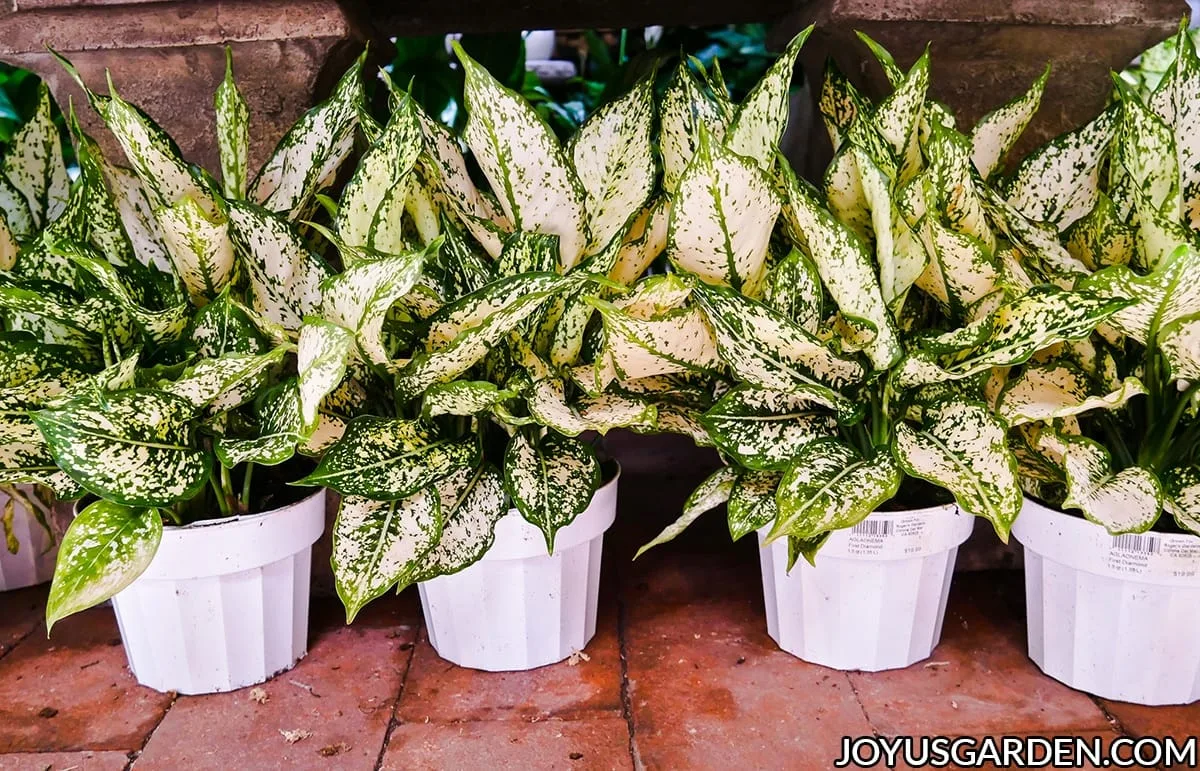
Some Of Our General Houseplant Guides For Your Reference: Guide To Watering Indoor Plants, Beginner’s Guide To Repotting Plants, How to Clean Houseplants, Winter Houseplant Care Guide, Plant Humidity: How I Increase Humidity For Houseplants, Buying Houseplants: 14 Tips For Indoor Gardening Newbies
Pests
My Aglaonema Siam Aurora has never gotten any. I’ve seen Aglaonemas with mealybugs and spider mites. Keep an eye out for aphids and scale too. I’ve done posts on Mealybugs, Aphids, Spider Mites, and Scale Insects so you can identify and treat them early on.
Pests can travel from plant to plant very fast so make you get them under control as soon as you see them.
Pet Safety
The Aglaonema Siam Aurora, like other plants in the Aracae family, is considered to be toxic to pets. I always check out the ASPCA website for my info on this subject and see in what way the plant is toxic. Even though the site says Chinese Evergreen, it applies to all aglaonemas.
Red Aglaonema Flowers
Yes indeed! It has a spathe-type flower which you see below. My Aglaonema Red flowered late last summer into early fall. The spathe is light green and the spadix (the center part) is white.
I’ve heard that it’s good to remove the flowers because they zap energy from the plant. I leave them on and haven’t found that to be true. I cut them off (down to the base) when the spathe and spadix are both dead. Maybe I’m missing something but I like to look at them!
If your plant is growing in low light, then it’s unlikely it’ll flower.

Red Aglaonema FAQs
Yes, I think this is one of the easy-care houseplants.
Yes. A location with bright indirect light is best to keep the colorful foliage. This plant isn’t suited for low light conditions but be sure to keep it out of the direct afternoon sunlight.
There are other Chinese Evergreen plants much better suited for lower light conditions.
Plants with vibrant colors like this one need moderate to high light for the best color. Bright light is key.
The best way is to up the light level!
This is a key point of Red Aglaonema care. There are quite a few factors that determine how often to water yours which are covered under “Watering”. Be sure not to water yours too often (keep it constantly wet) because it’s subject to root rot.
Your plant will tell you when it needs water. The stems droop, the soil feels dry, and the leaves turn yellow and/or brown.
An occasional lower or inner yellow leaf is part of the normal growth process. Otherwise, it’s most likely due to too much water. Other common causes: too much fertilizer (the frequency or amount), the plant being too dry, or it’s receiving too much sun.
They get to be about 2-3′ by 2-3′. It’s a moderate grower (slow in lower light) so it may take a while if yours is small.
Tip pruning the new growth will help to keep yours bushy. You can prune back more if your plant needs it.
They can grow outside year-round in gardens in tropical climates in bright shade. You can put yours outside for the summer months if protected from the hot sun.
The Aglaonema Siam Aurora, like other plants in the Aracae family, is considered to be toxic to pets.
Are you ready to get a jazzy Agalonema Siam Aurora? It’s easy to care for and oh-so attractive!
Happy gardening,

